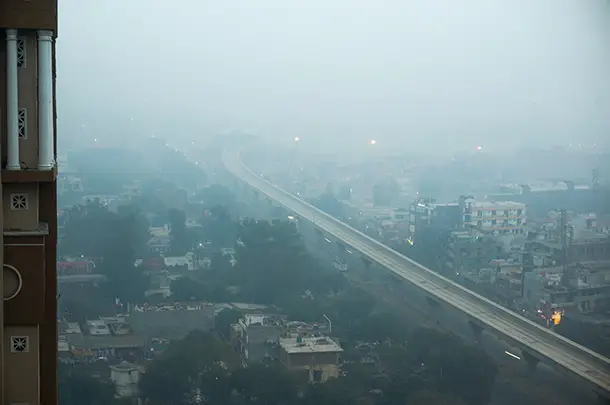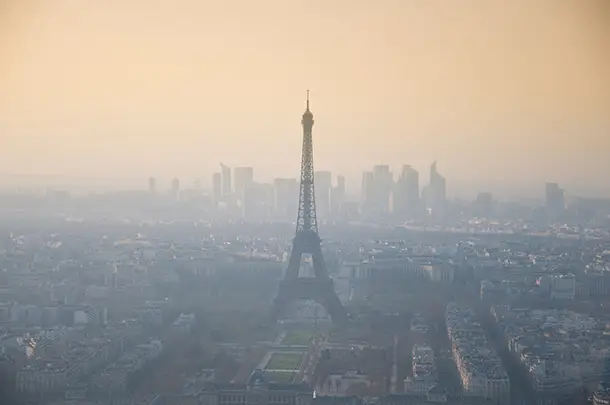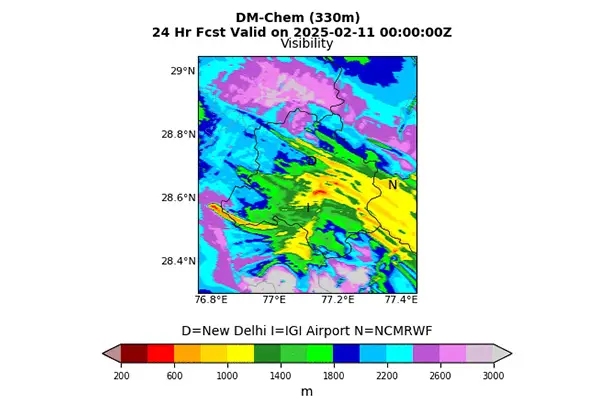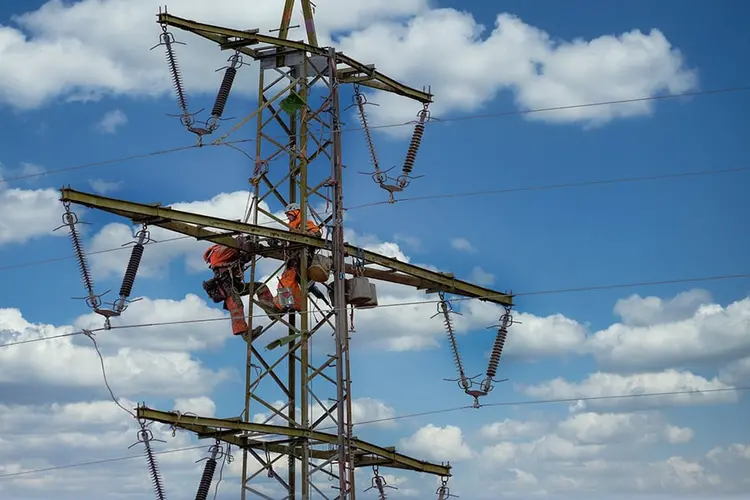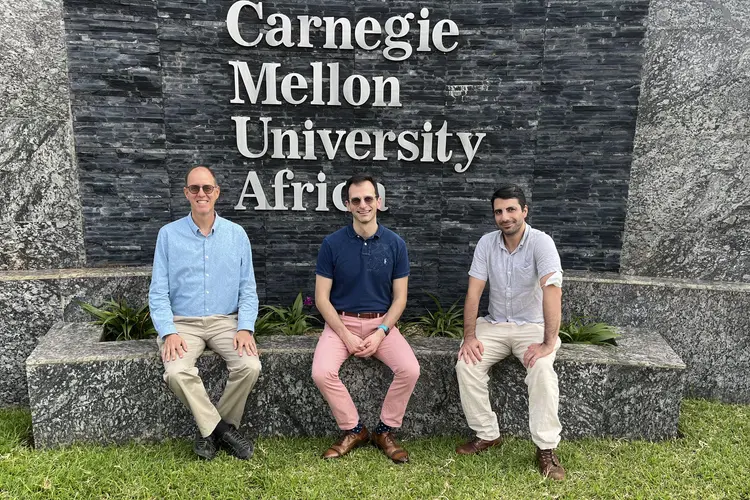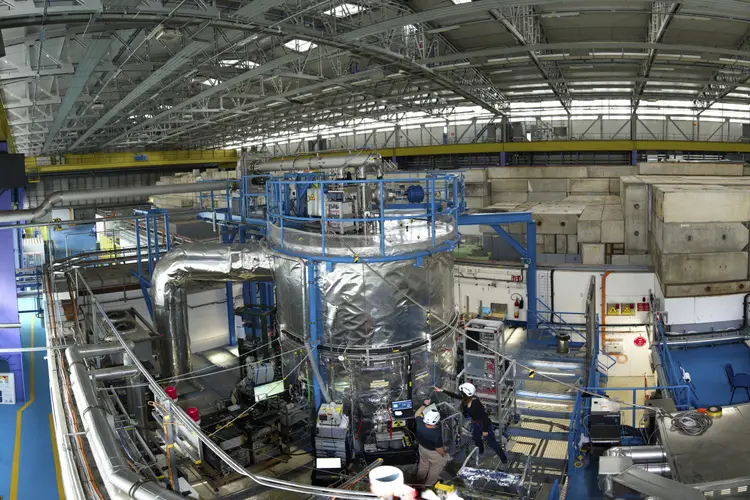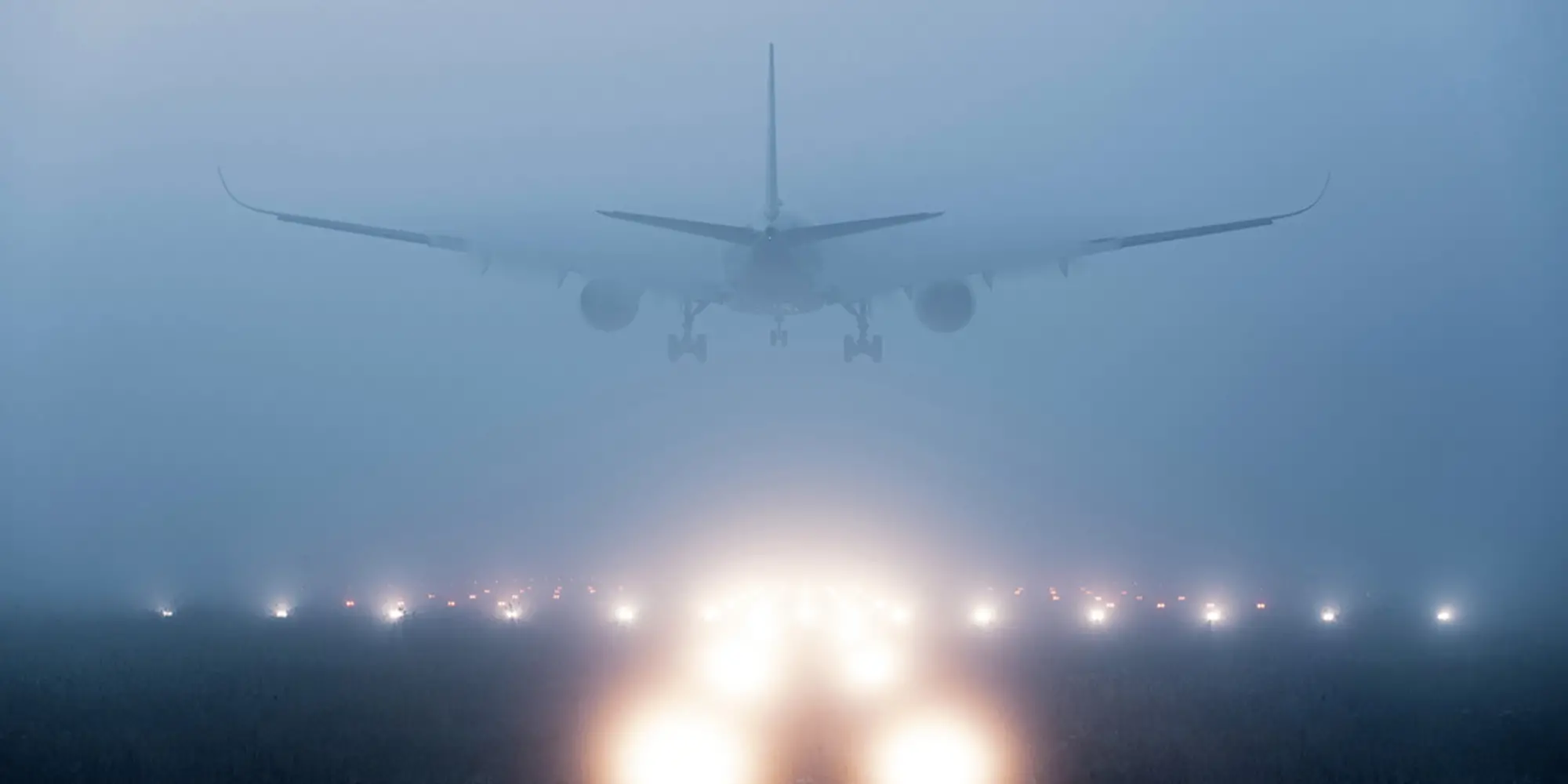
Lifting the Fog on Air Pollution-Weather Interactions
Media Inquiries
Researchers at Carnegie Mellon University are improving weather forecasting models so that they better represent air pollution, aerosols and their effects on fog. Fog reduces visibility, with implications for safety and the economy, especially associated with air and sea transportation.
Most weather forecasting models available today are not very accurate at representing the fog lifecycle: when it starts, how thick it is and when it dissipates. The Gordon Group(opens in new window) is addressing these shortcomings in the existing models by improving the representation of droplet number concentration and size. These fog properties are strongly impacted by air pollution. In polluted environments, more and smaller droplets restrict visibility more than fewer and larger droplets.
Working with the U.K. Met Office Unified Model as the baseline, the Gordon Group adds new code to better represent both air pollution particles, or aerosols, and fog.
Researchers at India's National Centre for Medium Range Weather Forecasting (NCMRWF) and the U.K. Met Office used that work as the basis for a new weather forecasting system published in the Bulletin of the American Meteorological Society(opens in new window). They show the integration of an aerosol air pollution forecasting system with other systems to provide real-time forecasts of visibility and particulate matter 2.5 for Delhi and the neighboring regions.
A reliable air quality and visibility forecast can impact public health and minimize economic losses. The weather forecasting system in Delhi shows how Hamish Gordon's(opens in new window) model can be applied to provide operational products for industrial partners, like airports. In Delhi, air pollution is high and has a large effect on visibility. "The idea is to forecast low visibility events. This will allow the airport to anticipate disruptions, flight delays and potentially to make preparations for such situations," said Gordon, assistant professor of chemical engineering.
Since introducing the forecasting system in 2021 in the Quarterly Journal of the Royal Meteorological Society(opens in new window), Gordon and his collaborators have significantly improved it. In order to represent visibility, the model has to represent air quality, at least in a simple way. The baseline Unified Model represents atmospheric particles at 100 kilometer grid resolution. Gordon adapted this modeling system for use at higher resolution.
He and his collaborators were the first to use the modeling system to represent differences in air pollution across cities and across cloudy environments, at grid resolutions of 500 meters and 330 meters. The ability to represent gradients of air pollution at these fine scales enables the model to represent large cloud systems.
The researchers at NCMRWF also integrated the air pollution system with the latest and best land surface modeling environment. The land surface model is particularly well-adapted for urban environments because it represents street canyons. Its integration means that the weather forecasting system can better forecast air quality in Delhi, and this development could be beneficial elsewhere, for example in cities within the United States.
Delhi has unique conditions that make it particularly challenging to predict visibility. High levels of particulate matter air pollution are often accompanied by episodes of dense fog. Seasonal agricultural fires are one contributor. In the fall, farmers in the regions surrounding Delhi burn the stubble in their fields. These fires vary widely by day and week.
Earth System models don't typically represent day-to-day variability in agricultural burning, and they also don't represent it at high grid resolution. The NCMRWF model represents fires on a daily timescale and uses them in visibility forecasts. "We have to assume persistence, but still this is much more sophisticated and likely much better than just using a monthly average for the smoke emissions from the fires," said Gordon.
Local irrigation activities also need to be treated in detail in the weather forecasting system because they affect relative humidity, which in turn affects fog.
The Gordon Group also uses case studies from other parts of the world to realistically simulate fog droplet concentrations in a weather forecasting model. They test different processes for aerosol activation, the process by which air pollution particles become fog droplets.
Without accurate representation of aerosols, weather prediction models cannot accurately predict clouds or fog. Aerosol particles can range in size from approximately 20 nanometers to a few microns. Most field campaigns do not measure the entire range. A Gordon Group study currently available as a preprint from Atmospheric Chemistry and Physics(opens in new window)(opens in new window) uses observational data from the ParisFog field campaign, which measured the entire aerosol size range for two weeks, along with other aerosol properties. The research is a collaboration with the U.K. Met Office, Oak Ridge National Laboratory, and the National Centre for Meteorological Research in France.
Gordon and Pratapaditya Ghosh set up simulations over Paris and evaluated the Unified Model against the ParisFog dataset. By making physics-based changes in how droplets form in the model, they got much better agreement with the observations. Their methods for simulating fog droplet number concentration can improve fog forecasts without increasing computational costs.
"Our 500 meter resolution setup is more like that in an Earth System model than in the weather forecasting models commonly used to simulate fog," said Ghosh, a Ph.D. student in the Department of Civil and Environmental Engineering.(opens in new window) "We showed that our model setup is able to simulate fog at the correct location, with broad characteristics, in good agreement with observations."
A companion Atmospheric Chemistry and Physics preprint(opens in new window) from Gordon and Ghosh is a more detailed study of the aerosol activation mechanism in fog. To better evaluate their model, they used measurements of the vertical structure of fog from a United Kingdom case study, in addition to the ParisFog dataset.
Existing models are designed to calculate cloud droplet number concentrations. The mechanism by which fog forms, however, differs slightly from the mechanism by which clouds form. Most atmospheric models do not account for this difference.
When Gordon and Ghosh added the fog formation mechanism, radiative cooling, into the Unified Model, its performance improved. "We could get more realistic fog droplet number concentrations," said Ghosh.
Their research suggests that both the fog formation mechanism and the cloud formation mechanism are important in atmospheric models. Gordon and Ghosh call for more evaluation in different locations and with different types of fog. Their findings are a foundation from which to improve the droplet number concentration of fog in any weather forecasting model.
More accurate models can help minimize health and economic losses while advancing the understanding of fundamental atmospheric processes underlying air pollution-weather interactions.
